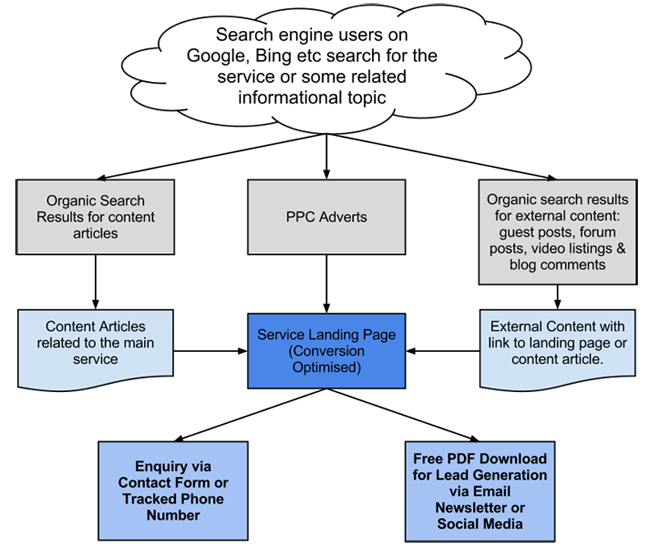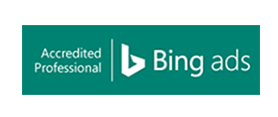Internet Marketing – the new frontier, the wild, wild west. A brutal landscape where David can and has toppled many a goliath with SEO and guerilla style internet marketing techniques. You know the drill, but problem is, despite doing a bit of everything you read about or that your agency advised it’s just not working out for your small business.
Internet Marketing Strategies & Techniques
There are many ways to market your business online: SEO often leads the charge followed closely by PPC, CRO, Social Media, Content Marketing, Link Building, Lead Generation and Email Marketing. Yet, despite engaging in some, or possibly all of these activities, you just seem to be spinning the wheels and are not seeing any return on the bottom line. Maybe, you know the pieces of the puzzle but have failed to do anything substantial as you just don’t know where the hell to start.
All too often, I see companies doing a series of Internet Marketing activities but without any real focus or direction. There will be content marketing, link building, paid per click and even external SEO agencies coming in. There are social media campaigns, email marketing and even telemarketing and other offline ventures all plugging away in some form of chaos theory marketing. Often, the business is making money but does not know why or where and unfortunately, many businesses are failing to see any return from their SEO and Internet Marketing efforts when they are conducted in this manner.
Internet Marketing by Numbers
The purpose of this article is to give you a basic framework and strategy for your Internet Marketing efforts. We won’t do anything new, in fact, this may even simplify what you are doing, but what we will do is hang it all together in a coherent way that is driven by the business goals and that provides metrics to allow you to easily measure and improve your results.
The ingredients in our approach are as follows
- Service Landing Page
- SEO & PPC for Transactional Queries
- Content Marketing & SEO for broader scope
- PDF Downloads or some other incentive for Lead Generation
- Tracked Contact Form and Phone Number for enquiries
- Analytics and Tracking tools to measure success
That should all be fairly straightforward but let’s take a look at a pretty picture that just shows all of these components in place.
Figure 1. Internet Marketing Strategy

All Rivers Run to One Place
So, to break it down, we have a core service page that is designed to solicit a response from visitors. The ideal response would be an enquiry or sale but not everyone is going to buy on the first visit so we want to get permission to carry on marketing to these other folks so we offer them an incentive in return for their permission to do so. What this incentive is will depend upon your business but often a free download of a report or some information we know is valuable to the target audience will do the job admirably.
We can also see that traffic can come via different channels off the back of the search engine results: PPC adverts drive direct traffic for transactional (ready to buy) search queries and our content articles further widen the net for people making pre-purchase queries (thinking about buying) but possibly searching around the edges of a topic (reviews etc). Finally, we have content on other sites to further saturate the search engine results to provide as many possible ways for people to reach our service page and either buy or download our incentive and give us permission to carry on marketing to them.
Landing Pages – The Center of your Marketing Universe
It’s possible to come up with highly complex sets of landing pages for individual traffic sources, and in many cases, that can be a good approach to allow you to wring every last bit of performance out of your campaigns. That said, we want to get you to grips with the basic framework and not blow you away with complexity so we will look at all traffic sources driving traffic to a single landing page for your product or service.
To illustrate how all of this could work let’s provide a fictional example for Jerry’s TV Shop. Jerry’s TV Shop is an online store selling all the latest LED TV’s. They are doing okay, but PPC is proving expensive as is the outsourced content development and link building and no one really knows what is working.
1. Landing Pages
The landing pages here are the TV product pages themselves. On these pages, the ideal outcome is that someone would purchase a TV online or call the company. We are seeing lots of bounces on this page so we know that whilst people are finding it, only 1% is buying and that other hard marketed 99% is just slipping away.
We want to maximise our chances to sell to these people so we want to provide them with a high-quality buying guide for LED tvs. This includes reviews of the top models, price comparison and a detailed overview of all the information required to make a purchasing decision. This content is free to download for people who sign up to our newsletter and it is made highly visible on the screen.
We make sure that sales, enquiries, phone calls and the lead generation is all meticulously tracked as a conversion in your analytics so we can see which keywords drive sales, enquiries and lead generation and use that to help refine our approach down the road.
2. Pay Per Click Adverts
We create our pay per click adverts and focus on the transactional keywords with traffic driven to the product page itself. Any conversion data available is used to help us refine the keywords we go after.
3. Content Marketing
For each TV we develop a series of articles that help to drive content to the service page. This could be a review of the TV, a comparison article with several other TV’s, a guide to the many features, a calibration guide for the TV – the choices are endless and the standard tools used to research what people are searching for can be used to guide your hand.
An important point to note here is that transactional queries that we target in PPC reflect only about 10% of search traffic whilst informational queries such as the ones we are looking at here reflect around 80% of search volume so this approach, whilst indirect, has to form an important part of your overall strategy.
4. External Content
As an extension of the articles we post, we can look at external sites to provide yet more visibility. This will have a weaker click through but we can easily post reviews, help people with problems and generally advertise our credibility and existence through adding valuable content to online discussions. This may be on forums or comments on other blogs and may include guest posts at other highly visible sites within your industry. Likewise, a video review on youtube or video tutorials may help further bring traffic tumbling towards the main site and landing page.
With this type of content, the funnel may be a little deeper and we may try to drive people to our content articles as well as to our landing pages but the overall goal is the same – improve visibility and broaden the scope.
Business Driven Marketing
This approach, whilst probably not too different to what you may be doing has one, important difference that makes all the difference in the world – everything is driven by the goals of the landing page and the business. So, instead of creating some random articles, and hoping people may visit the site, we are thinking of how we can get more people to the product page, what are the informational needs of the people looking to buy this TV or looking to buy any TV and how can we help them make that decision?
Instead of a chaotic set of unrelated marketing practices, we have one related set of activities tied to the goals of the landing page. We are also ensuring that we generate lots of leads to follow up on by providing some other useful content in exchange for the permission to continue beyond this model with social media and email marketing. The leads and ultimate sales you will generate from these users will far outstrip the 1% that clicks through and buys on the first visit and if you can just convert another 1% of leads to sales you have doubled your sales in an instant (and with careful marketing you should do far better).
Joining the Dot(coms)s
It is so, so easy to get this whole Internet Marketing thing wrong. It is easy to focus on SEO or ranking without ever really thinking the process through and likewise, it is easy to write a series of disconnected articles and hoping people will browse the site and find things they want to buy on the back of them. You don’t have to work any harder, just use a little strategy, planning and organisation to ensure that all the marketing work you do, works hard for you as absolutely possible.
The Next Level
Social Media and Email Marketing allows to take this a stage further and next week I will show you how to optimise these approaches to get the most from those leads.
Questions? Comments?
If you are marketing, but not winning and are doing things in a disconnected way, then just a simple rethink and a sprinkling of strategy will help you get so much more from this.
As ever, please share the article and drop a comment below or give me a shout on Twitter if I can help!






